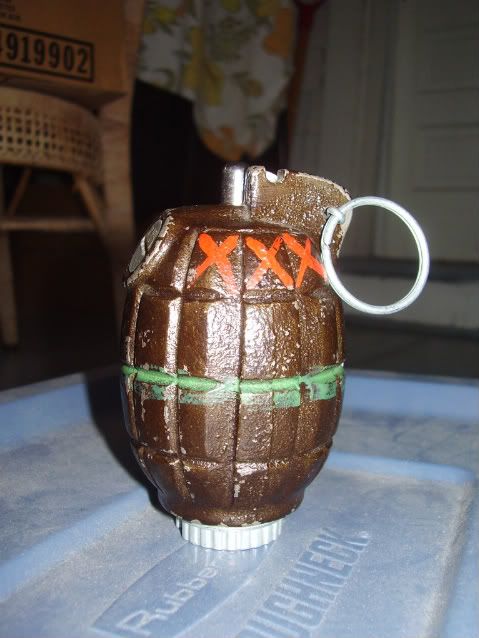Thanks guys. The Trench Gun is a recent addition, got it last month.

This is one of my favorites, a Lee-Enfield Royal Irish Constabulary carbine, one of about 1100 converted from Lee-Metford carbines in 1904 (the other 9000 done from Lee-Enfield cavalry carbines). These were used by the Royal Irish Constabulary during the Irish War of Independence from 1919-1921. This photo is gonig to be appearing in an article by Paul Scarlata in an upcoming issue of Shotgun News. Again, with the hard to find P88 bayonet.

This is another recent addition, a 1944 dated British No.36 Mk.I Mills Bomb - no fuze or filler, of course, but everything else is there and original. The green band and red Xs indicate are the period British indicator for high explosive - this is a real fragmentation grenade, not a trainer. Not many of these survived the war, for obvious reasons.

Here's a pair of Austrian rifles, both of which use straight pull bolts. The top rifle is a Mannlicher M95/31, built by Steyr. These were the main Austro-Hungarian rifle of WW1. This one ended up in Austrian hands after the Habsburg empire was dissolved, and was converted to the more-powerful 8 x 56mm cartridge in 1931.
The bottom one is a Mannlicher M88/95. The M88 was the previous model of Mannlicher, using a much weaker (but smoother) bolt design. This one is extremely rare in that it's been upgraded with M95 pattern sights - Paul Scarlata's book on Mannlichers (currently the definitive source) only includes one illustration and no photos. This one is still in the original 8 x 50mm chambering.

This is a Finnish Mosin-Nagant M/24 Civil Guard Rifle (nicknamed the "Lotta Svaard" after the women's auxiliaries who raised funds for them). Finnish Mosin-Nagants are actually built on rifles captured from the Russians and improved into entirely new models. The M/24 was built exclusively for the Civil Guard, who are best compared to a non government run version of the US National Guard. This one was issued in the Helsinki district, and used on the front lines when the Guard was called up during the 1939-1940 Winter War. Interestingly, unlike the vast majority, this has no regular army markings from when the Civil Guard was disbanded in 1945 in accordance with the peace treaty with the Soviets - suggesting it's owner stuck it in a barn, waiting for another Soviet invasion.